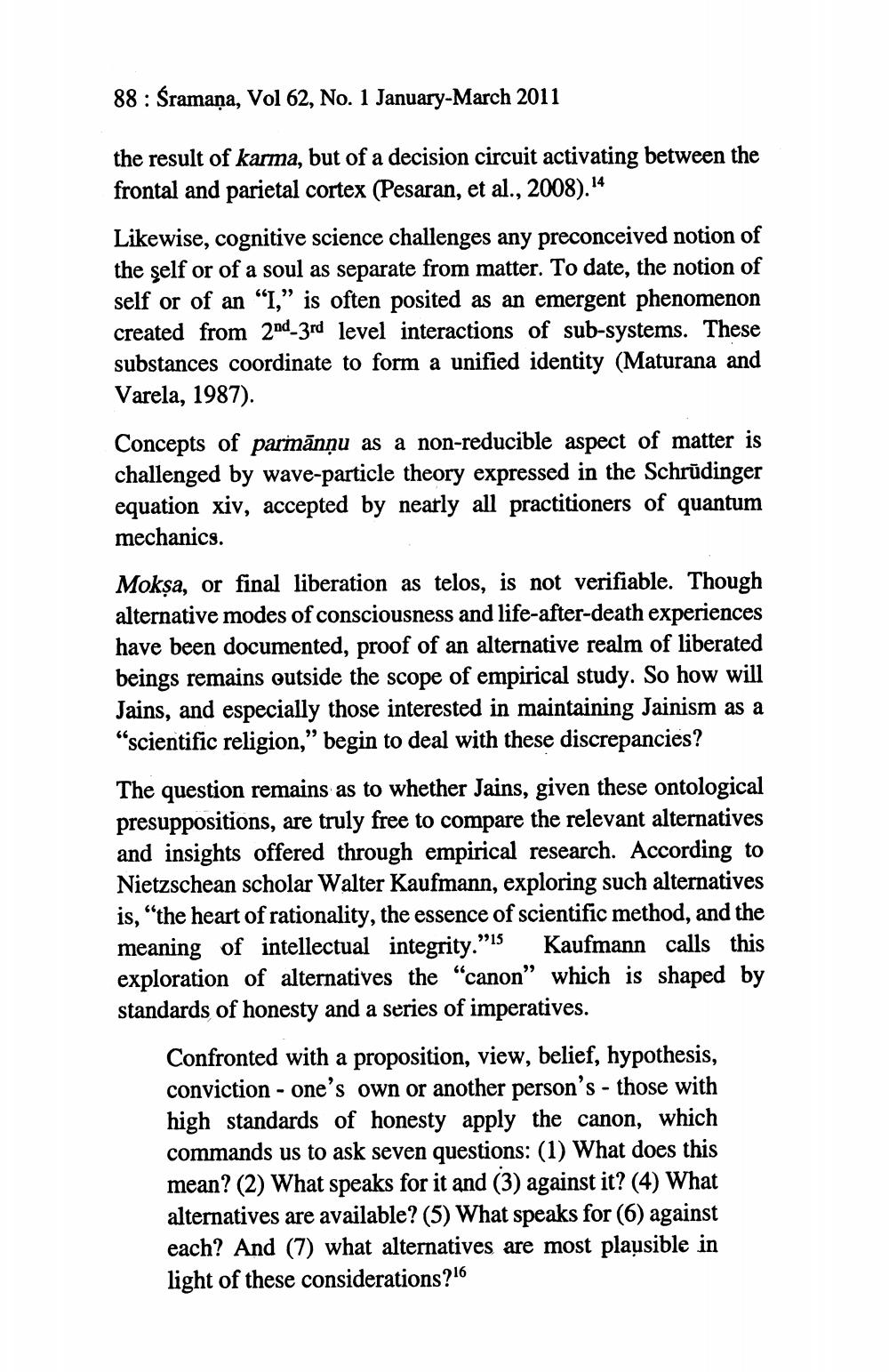________________
88 : Sramaņa, Vol 62, No. 1 January-March 2011
the result of karma, but of a decision circuit activating between the frontal and parietal cortex (Pesaran, et al., 2008). 14 Likewise, cognitive science challenges any preconceived notion of the self or of a soul as separate from matter. To date, the notion of self or of an “I,” is often posited as an emergent phenomenon created from 2nd 3rd level interactions of sub-systems. These substances coordinate to form a unified identity (Maturana and Varela, 1987).
Concepts of parinānņu as a non-reducible aspect of matter is challenged by wave-particle theory expressed in the Schrūdinger equation xiv, accepted by nearly all practitioners of quantum mechanics.
Mokşa, or final liberation as telos, is not verifiable. Though alternative modes of consciousness and life-after-death experiences have been documented, proof of an alternative realm of liberated beings remains outside the scope of empirical study. So how will Jains, and especially those interested in maintaining Jainism as a “scientific religion,” begin to deal with these discrepancies? The question remains as to whether Jains, given these ontological presuppositions, are truly free to compare the relevant alternatives and insights offered through empirical research. According to Nietzschean scholar Walter Kaufmann, exploring such alternatives is, “the heart of rationality, the essence of scientific method, and the meaning of intellectual integrity.”:15 Kaufmann calls this exploration of alternatives the "canon” which is shaped by standards of honesty and a series of imperatives.
Confronted with a proposition, view, belief, hypothesis, conviction - one's own or another person's - those with high standards of honesty apply the canon, which commands us to ask seven questions: (1) What does this mean? (2) What speaks for it and (3) against it? (4) What alternatives are available? (5) What speaks for (6) against each? And (7) what alternatives are most plausible in light of these considerations ?16




